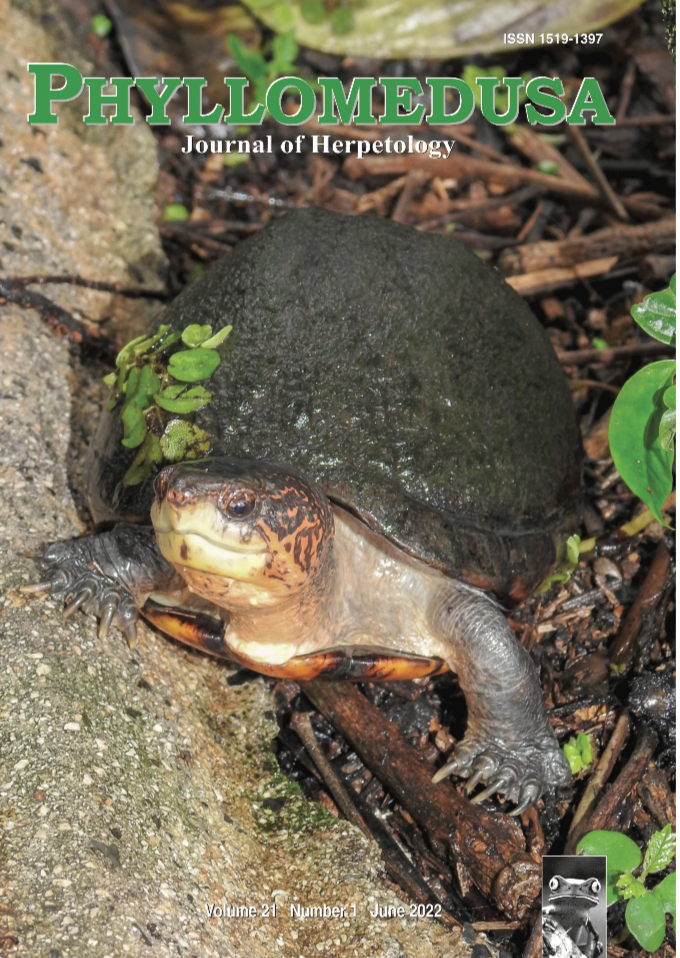Predatory influence of dragonfly larvae and water scorpions on eggs and tadpoles of Indosylvirana temporalis (Anura: Ranidae)
DOI:
https://doi.org/10.11606/issn.2316-9079.v21i1p51-57Keywords:
Developmental stages, Eggs, Hemiptera, Laccotrephes sp., Odonata, Pantala flavescens, Predator-prey interactionsAbstract
We assessed in the laboratory the vulnerability of Bronzed frog (Indosylvirana temporalis) eggs and tadpoles to two potential sit-and-wait insect predators, larvae of a dragonfly (Pantala flavescens; Odonata: Libellulidae) and adult water scorpions (Laccotrephes sp.; Hemiptera: Nepidae). We exposed a series of different developmental stages of I. temporalis (from eggs to metamorphic climax stage) to these two predators. The results of this study showed that larvae of P. flavescens preyed on eggs and tadpoles of I. temporalis but only to stage 36. Laccotrephes sp. did not prey on eggs of I. temporalis but on tadpoles of all stages (22 to 42). This difference in predation rate was likely due to the gape size of the predators. The larvae of P. flavescens are gape-limited and cannot prey on larger tadpoles (above stage 36). Adults Laccotrephes sp. are non-gape-limited predators, using a segmented beak to pierce I. temporalis and suck the body fluids. They captured small to large tadpoles by quickly grabbing and immobilizing them using the front pair of raptorial legs. The present study shows that both predatory insects are a threat to I. temporalis at early and later stages of larval development.Downloads
Download data is not yet available.
Downloads
Published
2022-06-24
Issue
Section
Articles
License
Copyright (c) 2022 ESALQ-USP

This work is licensed under a Creative Commons Attribution-NonCommercial-NoDerivatives 4.0 International License.
All material originally published in Phyllomedusa belongs to Escola Superior de Agricultura Luiz de Queiroz - Universidade de São Paulo. All contents are under a license of Creative Commons BY-NC-ND.How to Cite
Mogali, S. M. ., Shanbhag, B. A., & Saidapur, S. K. (2022). Predatory influence of dragonfly larvae and water scorpions on eggs and tadpoles of Indosylvirana temporalis (Anura: Ranidae). Phyllomedusa: Journal of Herpetology, 21(1), 51-57. https://doi.org/10.11606/issn.2316-9079.v21i1p51-57



 Impact Factor (JCR): 0.600
Impact Factor (JCR): 0.600 CiteScore: 1.0
CiteScore: 1.0